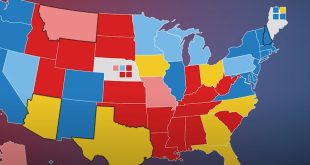
A recent survey discovered that almost half of all adult American children are receiving financial support from their parents. The financial support ranges from sending money and paying bills to many young to middle-aged adults still living at home or moving back in with their parents.
For many of us, including myself, this seems like a bizarre construct. It was made very clear to me from about the time I started high school that the expectation was that I would no longer live with my parents once I graduated, let alone receive financial assistance from them.
Of course, it would never have occurred to me to stay home post-graduation as I was itching to get away from my parents and forge my own life. But is the recent change in mindset a cultural shift, or is it connected to the economy young Americans are forced to grapple with?
A helping hand?
According to a recent Savings.com study, almost half of parents in the United States support their adult children financially. The average age of adult children still receiving financial support from their parents is 22.
Of the 47% of parents who foot the bill in some way for their adult children, most said they believe their kids should be financially independent by age 25. However, many surveyed parents still support their kids well past this proposed milestone.
Among the generations, 21% of parents are financially helping millennial children (ages 28 to 43) or Generation X children (ages 44 to 59). On average, the amount of financial aid given to these two generations ranges between $907 and $960 a month.
RELATED: Newt Gingrich: Biden Losing Support From Young Voters Because He’s Made Life Unaffordable
The rest of the parents assist Generation Z children (ages 18 to 27), costing an average of $1,515 monthly. The financial assistance goes to a variety of expenses, with the following list being the most common:
- groceries
- cellphone bills
- rent
- mortgage
- tuition
- health insurance
So, what is driving this trend in financial assistance to grown children?
Not as clear
The study’s authors explain why adult children seem to leech off their parents. They write:
“Driven by a convoluted mix of socioeconomic factors, adults receive help from their parents well into their twenties, thirties, and beyond.”
As a millennial, I frankly couldn’t imagine receiving financial assistance from my parents. I have always felt pride in knowing that since I was 18 years old, I have been 100% financially independent.
That’s right; as a 41-year-old woman, I have been paying my own bills, buying my own stuff, and securing my own shelter since I was a legal adult. However, the world looks much different now than when I was 18 years old.
The survey explains:
“For some, it’s tempting to simply say that today’s young adults are just mooches and that a strong foot in the rear will launch them into normal independent adulthood. That may be gratifying for parents who are tired of footing the bill, but it doesn’t solve or even properly describe the economic factors at play, such as rising housing costs.”
RELATED: Mother Used ‘Free’ Money From D.C. Guaranteed Income Program on Vacations, Makeover
It is true that rent is considerably higher today than it was when I was a young woman over twenty years ago, and the cost of living in general hasn’t improved either. The U.S. Agriculture Department predicts that food prices will increase by 3%, with grocery store prices predicted to go up an additional 1.6%.
It just simply isn’t as easy as it was when I was young and on my own to make it when you are…well…young and on your own.
Hidden cost
I believe most parent’s goal is to provide just a bit more for their children than their parents were able to do for them. When my husband and I speak about what we want for our children’s future we have a constant theme: we want them to have it a little bit easier than it was for us, but hard enough that they forge their own path.
Depending on what our children decide to do once they are college-age, we could allow them to continue to live with us. But where should parents draw the line, and what are the third—and fourth-order consequences?
The same study found that parents contribute to their adult children’s finances:
“…2.3 times more to support adult children than they do to their retirement accounts each month.”
That sort of assistance could leave some parents and adult children in the opposite situation years later. A Pew Research Center survey found that 33% of adults aged 18 to 34 have, at some point, needed to financially support their parents.
For a time, my husband and I found ourselves a part of this group known as the sandwich generation, supporting children and adult parents at the same time…a heavy financial and emotional burden to bear. That same Pew Research Center survey also found interesting decreases in key family milestones.
In 1993, 63% of 30 to 34-year-old Americans were married; today, that percentage is only 51%. Additionally, in 1993, 33% of adults aged 18 to 34 had at least one child; today, that percentage has plummeted to 27%.
It’s no wonder it can’t be easy to find a date, let alone procreate, while having Mom and Dad pay your bills or, worse, still living with Mom and Dad.
Now is the time to support and share the sources you trust.
The Political Insider ranks #3 on Feedspot’s “100 Best Political Blogs and Websites.”
 Top Naija News: Nigerian News, Breaking News Nigeria and World News Top Naija News is a daily news publication in Nigeria, delivering the latest breaking news in Nigeria and around the world.
Top Naija News: Nigerian News, Breaking News Nigeria and World News Top Naija News is a daily news publication in Nigeria, delivering the latest breaking news in Nigeria and around the world.



